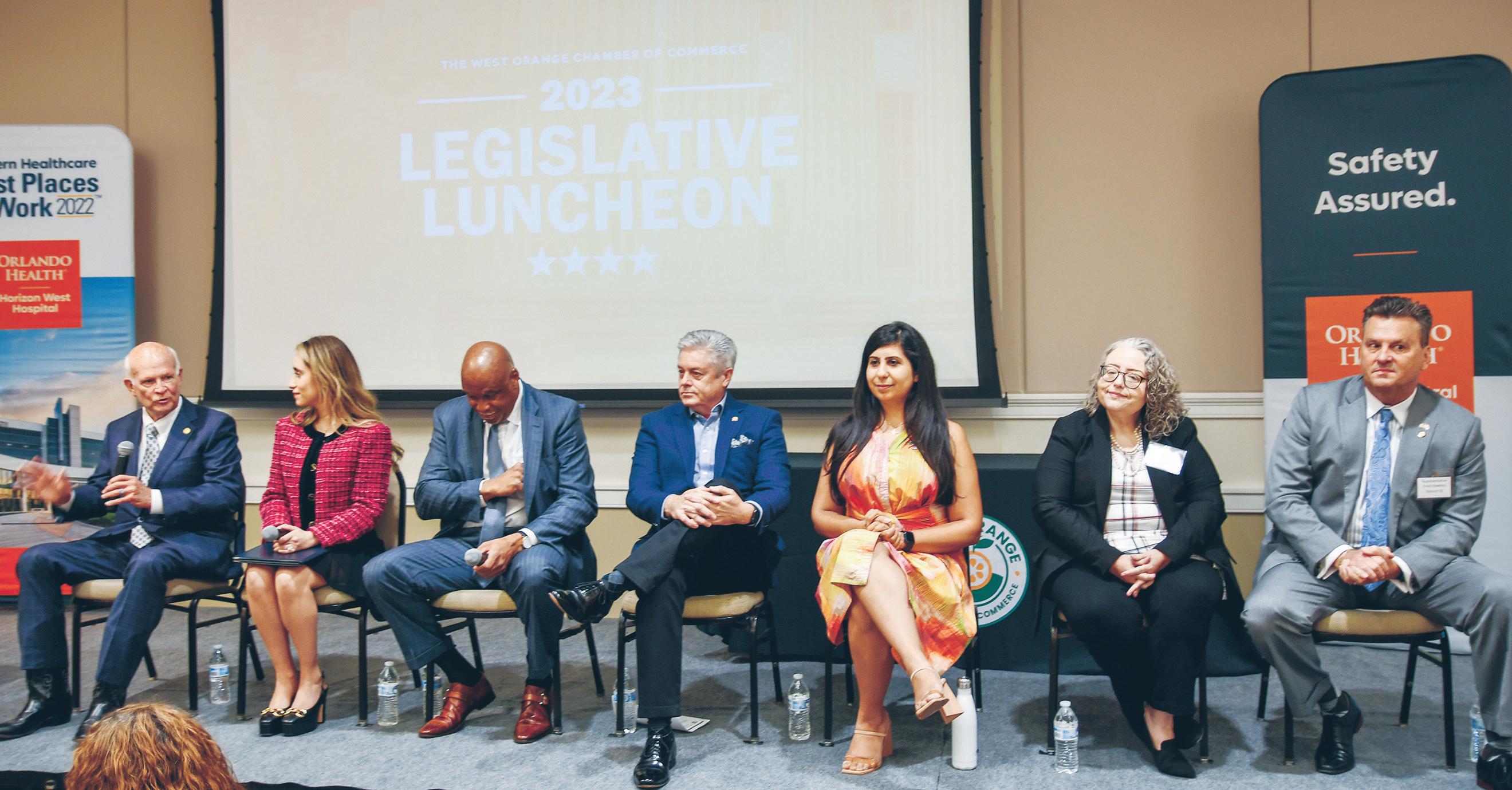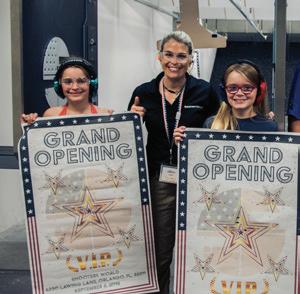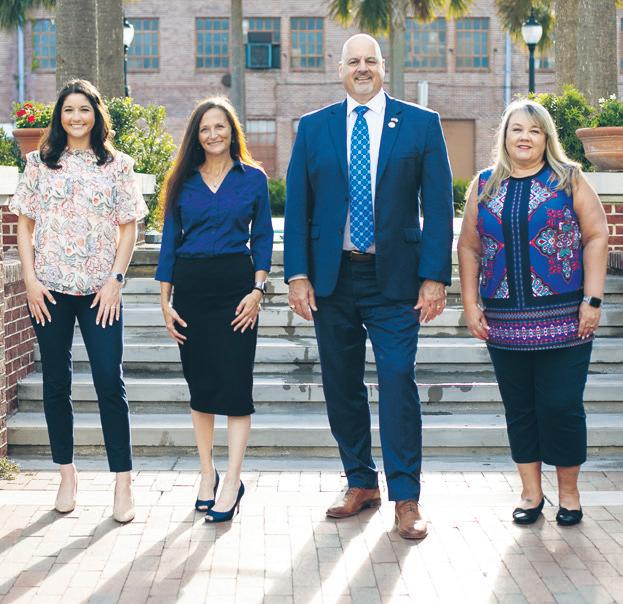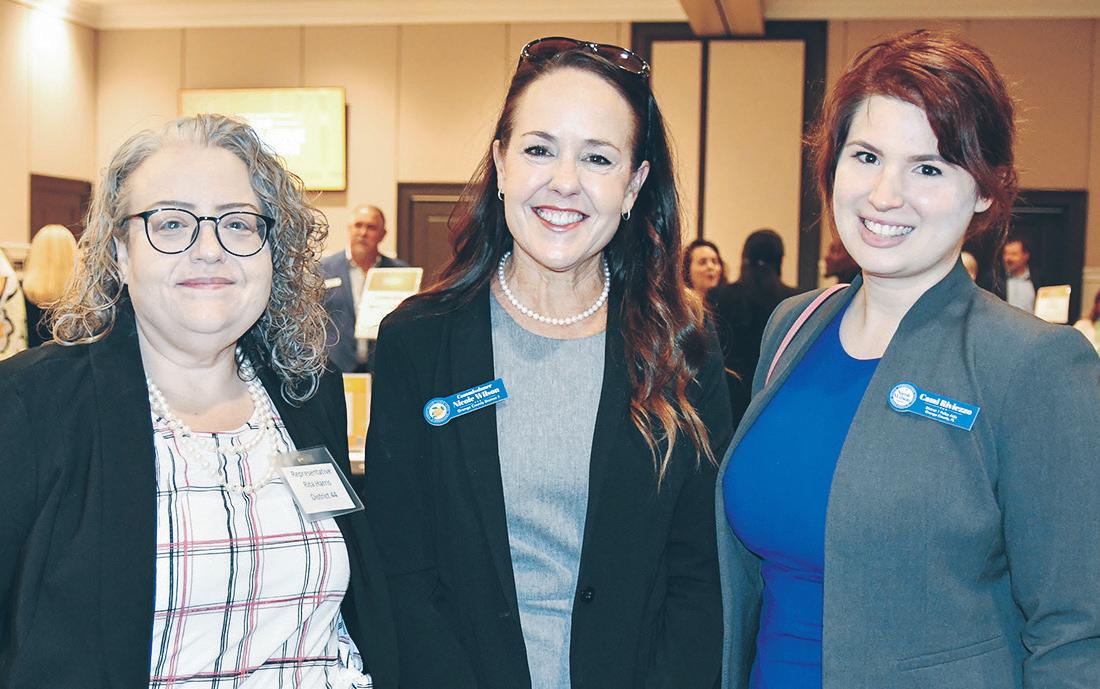
3 minute read
Orange County begins Vision 2050 meetings



AMY QUESINBERRY
COMMUNITY EDITOR
Orange County Government has launched a series of town hall meetings on Vision 2050, the proposed framework for sustainably managing the next three decades of growth in the county. These meetings will be held throughout Orange. The first was hosted by Orange County District 1 Commissioner Nicole Wilson Tuesday, May 9.
The interactive meeting, held at the Korean Presbyterian Church in Winter Garden, was set up with multiple stations and departments where residents could learn about the goals and objectives and the program and could give input and ask questions.

“Vision 2050 is the blueprint; it’s not code,” Wilson said. “It’s difficult to come up with an analogy for the layers of governing documents, but if you think of Vision 2050, it’s our vision, it’s a blueprint. It’s sort of the body of the car, and the code is the engine.”
Orange County is projected to add nearly 700,000 new residents by 2050. Staff and stakeholders have been working on a plan to lead the county toward a future vision rather than reacting to existing conditions.
The Vision 2050 initiative aims to guide how and where growth will occur over the next two-and-onehalf decades. It will be implemented through the adoption of a new landdevelopment code called Orange Code, which will focus on placemaking standards and context-based regulations.
As a type of form-based code, Orange Code will rely on developmental characteristics that are desired rather than those that communities seek to avoid. These plans act as blueprints for guiding short- and longrange development, resource protection, provision of public services and economic growth.
“Orange County continues to grow, and we can’t stop that, so we might as well start planning,” said Alberto Vargas, county planning manager. “We’re taking a document that was created by the Board of County Commissioners more than 30 years ago, reorganizing it and updating it.”
The county is first divided into six market areas — West Orange County falls in the Southwest market area. Each market is further subdivided sectors and place types. Sectors direct growth to where it’s encouraged, and place types direct the character of future growth.
“(That) formula of both a vision document that is predictable and a code that implements what’s in that document (is) the formula for success,” Vargas said. “The land development code is more than 66 years old. We have been incrementally, over time, amending it and patching it.”
HOW IT WORKS
Vargas said the county is looking at a more place-based formula that relies on the required elements that make up 10 chapters: Land use, mobility and neighborhoods; housing and community services; tourism, arts and culture; economy, technology and innovation; natural resources and conservation; recreation and open space; transportation; public schools; community facilities and services; and implementation and property rights.
Market areas are broken down into Northwest, Southwest, Core, East, South and Rural East. These describe the general character of geographical areas within the county. They inform and influence the structure of subsequent planning layers.
Sectors are labeled Targeted, Intended, Established, Rural, Preserved and Special. They are associated with specific long-range strategies that indicate whether an area should develop, redevelop or stay largely unchanged within the expected 30-year planning horizon.
Place types are Centers, Neighbors and Corridors and define existing and future planning areas, including appropriate development densities and intensities. Within these place types are further breakdowns. In Centers, there would be a regional center, tourist activity center, urban center, urban core, neighborhood center and rural center. In Corridors, there would be urban, main street and suburban corridors; and in Neighborhoods, there would be traditional, suburban mixed, suburban and rural.
“We begin to geographically define that we have six different market areas; we have six different sectors, and the place types is just another way to define future land uses,” Vargas said. “The only difference is we’re not talking about commercial, industrial, residential in isolation anymore — but in places that make sense and are suitable for the integration of those uses whether it’s vertically integrated or horizontally integrated.”
Town Hall Meetings
There are several districtcentric meetings planned throughout Orange County. Several meetings will pertain to the entire county.
n 6 p.m. Thursday, June 8, at Meadow Woods Recreation Center, 1751 Rhode Island Woods Circle, Orlando n 6 p.m. Tuesday, June 13, at Wekiva High School cafeteria, 2501 Hiawassee Road, Apopka n Monday, July 10, time to be determined, at the IFAS Cooperative Extension, 6021 S. Conway Road, Orlando n Tuesday, July 18, time to be determined, at either Barnett Park, 4801 W. Colonial Drive, Orlando, or Pine Hills Community Center, 6408 Jennings Road, Orlando

For more information on the initiative, visit ocfl.net/ vision2050. Residents can leave their feedback on a Vision 2050 map at buff. ly/3pv8ox4.











